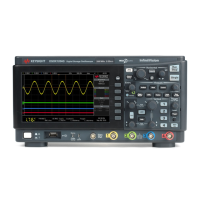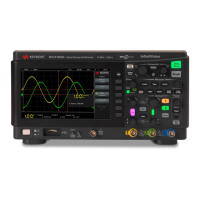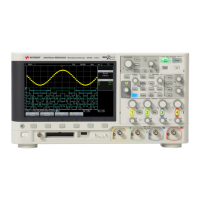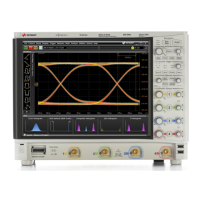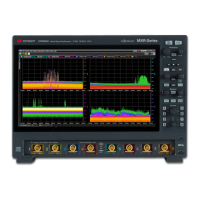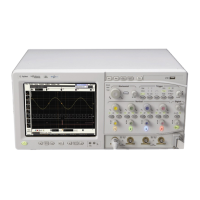162 Keysight InfiniiVision HD3-Series Oscilloscopes User's Guide
12 Acquisition Control
When the oscilloscope triggers, the single acquisition is displayed and the
oscilloscope is stopped (the [Run/Stop] key is illuminated in red). Press [Single]
again to acquire another waveform.
If the oscilloscope does not trigger, you can press the [Force] key to trigger on
anything and make a single acquisition.
To display the results of multiple acquisitions, use persistence. See "To set or clear
persistence"
on page 124.
Single vs. Running
and Record Length
The maximum data record length is greater for a single acquisition than when the
oscilloscope is running (or when the oscilloscope is stopped after running).
To acquire data with the longest possible record length, press the [Single] key.
For more information on settings that affect record length, see
"Length Control"
on page 265.
Overview of Sampling
To understand the oscilloscope's sampling and acquisition modes, it is helpful to
understand sampling theory, aliasing, oscilloscope bandwidth and sample rate,
oscilloscope rise time, oscilloscope bandwidth required, and how memory depth
affects sample rate.
Sampling Theory
The Nyquist sampling theorem states that for a limited bandwidth (band-limited)
signal with maximum frequency f
MAX
, the equally spaced sampling frequency f
S
must be greater than twice the maximum frequency f
MAX
, in order to have the
signal be uniquely reconstructed without aliasing.
f
MAX
= f
S
/2 = Nyquist frequency (f
N
) = folding frequency
Aliasing
Aliasing occurs when signals are under-sampled (f
S
< 2f
MAX
). Aliasing is the signal
distortion caused by low frequencies falsely reconstructed from an insufficient
number of sample points.
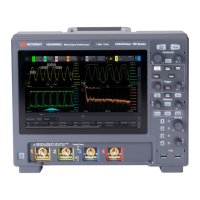
